Muscle Physiology...

This is the third of our three factsheets in the "energy from oxygen" collection. It complements and concludes the Heart Rate and Breathing articles by closing the virtuous circle of how our muscles propel our bicycle onwards and upwards.
The relationship between your heart lungs and muscles are as linked as the bars, seat, pedals and wheels on your bike. Compromise on one and you compromise the whole.
The potential for this article to get very messy, complicated and too in-depth is enormous. We could fill a book with what we know about this stuff, sadly (luckily) we only have a page.
However, a full, or even partial, understanding of the information within and around these articles will help you become a fitter, faster, stronger cyclist. And isn't that the reason we are all here?
Work 'Til You're Muscle Bound...?
 As you can see,
I've managed to work another song title in...
As you can see,
I've managed to work another song title in...
In the previous factsheets mentioned above, we've discussed getting the air from outside your body to inside your body via the lungs. Then transporting it from your lungs, in to your blood; and getting it from your blood down to your muscles.
Once in the muscles the oxygen miraculously combines with other magic stuff to make bike powering energy.
If ever there was a positive answer to the rhetorical conundrum of "size isn't everything", then this is it. Here's the first controversial point of the article; bigger muscles don't make you a faster cyclist.
The amount of people I have to dissuade from doing barbell squats and leg presses, because they think massive quads will make them a better climber, is without number.
It's what's in the muscles that's important, not the size of them.
So on that bombshell, let's crack on.
The Devil is in the Detail
It's not the big stuff that helps you, it's the small stuff.
Your muscles are made up of cells, and cells are small. You
can get 40 of them on the full stop at the end of this sentence.
Although small, a cell is packed to the gunnels with loads of other stuff, organised in a very highly structured and controlled way.
Amongst the many things in there, the main ones we're concerned with are plasma, mitochondria, adipose (fat), proteins, and carbohydrates.
 Just
as there are many types of car and "people movers" driving down a motorway, there are many differing cell types,
within our body.
Just
as there are many types of car and "people movers" driving down a motorway, there are many differing cell types,
within our body.
They may appear similar in concept, but they all have subtle differences, according to the functions required of them.
At this moment in time, our friends of choice are the red blood cells and their close-knit ally, the mitochondria.
For success, we need to cultivate and nurture them both.
Another friend, believe it or not, is fat! But we'll come to that later.
Muscle Types ~ Variations on a Theme
Most of you (long time readers) will probably know that
the muscle adorning our body is not all the same. Your heart is a muscle, but not the same
type of muscle as that in your legs or arms. You often hear
the term when climbing or sprinting, "I was on my last legs".
Your legs get tired; trust me, you don't want a heart muscle that
gets tired!
First out the bag is smooth (involuntary) muscle, found in the internal organs, stomach and intestines, etc. It's controlled by your nervous system and does what it does without you having to think about it; you don't send brain signals for your liver or kidneys to do stuff. They just know what to do and do it quietly, and without fuss or conscious drama.
Next we have skeletal (voluntary) muscle, a striated muscle that attaches to bones and lets your body do stuff. Skeletal muscles are controlled by your brain, which means you choose (volunteer) to move them. These muscles can quickly, reliably and repeatedly, stretch or contract, then return to their "normal" shape. These muscles allow us to sit down, stand up, run, pedal and type on a keyboard.
 The heart is constructed of cardiac muscle which,
unsurprisingly, is
found nowhere else in the body.
The heart is constructed of cardiac muscle which,
unsurprisingly, is
found nowhere else in the body.
The heart is a unique combination of striated (stripey), skeletal muscle (arms and legs), and smooth, organ muscle (kidneys, liver etc).
The heart works involuntarily and comes under the direct control of the nervous system, not the brain. Which is a good thing for those of us who can't multi-task.
The heart muscle is resistant to fatigue, due to the high density of mitochondria and a never ending flow of blood, which allows constant aerobic metabolism to take place.
And there's your first clue to success on a bike!
Variations on a Variation
We've identified that our body contains three types of muscle;
Cardiac, Smooth and Skeletal. Just to confuse things further there are
three differing types of striated skeletal muscles. Within
these three types of "powering" muscle are three things that concern
us.
Muscles are made up of fibres which contract at speeds relative to the task required of them. These fibres are made up of varying densities of Myoglobin (the iron-containing, oxygen absorbing bit) that defines their task, and strangely, colour.
Within the muscles are varying degrees of the crucial element to your success, the oxygen carrying mitochondria (below). Which we've covered before in other areas of the site and will do so later.
Mitochondria take the oxygen from the myoglobin and complete the delivery job to the point of need. You can't make them bigger, but you can, with the correct training, create more of them.
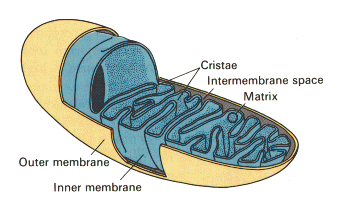
Muscles also contain varying numbers of capillaries. Which in effect are the final pathway for the journey of the oxygen from outside your body to the muscle. Capillaries are at their most dense in metabolically active muscle tissue. Obvious examples being your liver and kidneys.
Capillaries are so small, that red blood cells can only travel
down them in single file. So it doesn't take a genius to work
out that the more you have, the quicker the blood cells can get to
where they need to be to do their stuff. No one likes a queue.
The word capillarization, is just a flash name for the level of density of capillaries within each muscle. You can't make capillaries bigger, but (just like the oxygen carrying mitochondria) you can create more of them.
For both these entities, more is so very much better. So now you can see how you have an element of control over your oxygen delivery systems.
Pay Attention Part One...
Our areas of concern
and influence are...
▼ Skeletal Muscle
▼ Mitochondria
▼ Myoglobin Content
▼ Capillary Density
Quick, Quick, Slow
Generally, we have two flavours of muscle types, a quick type and a
slow type.
I believe I'm predominantly constructed of the slow type!
The quick type itself has two versions, type "a" and type "b". There is also talk of a transitional fibre type, which (if we had time) would bring us to a nature or nurture debate. But we don't; maybe next time.
Anyway, to clarify early on; the fibres described below, and their functions, are not placed in discrete boxes. As with our training physiology, they lie on a sliding continuum that allows their task to be legally manipulated and the performance edges to be blurred.
Let's start with Type I, the slow twitch (or slow oxidative) fibres, that, due to their high myoglobin (iron dense/oxygen absorbing) content are red in colour. Type I's have many mitochondria and are capillary dense. Their main function is found as "postural" muscles, the back and neck being two examples. You don't want these muscles failing, although in a TT you may feel your neck muscles giving out if you're in an extreme position for a great length of time.
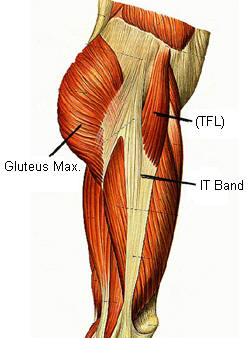
These are your diesel engines; they'll run all day, have a (relatively) slow contraction speed, resist fatigue, consume ATP at a slow rate and have the capacity to regenerate ATP through the aerobic (with oxygen) cycle. Cycling is predominantly an endurance sport so Type I fibres are the good guys.
Next up we have Type IIa, the fast twitch (fast oxidative) fibres that in essence are a hybrid between I and II. These are deep red in colour because they have a very high myoglobin content, and capillary density is the highest.
We don't have a lot of them, but dogs, horses and lions do!
They have a fast contraction speed, are resistant to fatigue, consume ATP at a very rapid rate and have an excellent capacity to regenerate it quickly through the aerobic cycle. We like these, but we don't have a lot of them! Well never enough, anyway.
Finally we have Type IIb, again fast twitch, but this time "fast glycotic" fibres, there's no oxygen involved with these babies. They are white in colour and are almost devoid of myoglobin and mitochondria.
They have a fast contraction rate, fatigue quickly, consume ATP quickly but regenerate it at a slow rate through the anaerobic (without oxygen) cycle. They produce high power for short bursts for a short time.
We like these, because with training, we can turn them in to type IIa fibres, which, depending on your discipline, can be an advantage. These are the "sprinting" fibres!
What does it mean?
Every (skeletal) muscle is made up of a combination of the above
fibres. Fast twitch, contract two to three times quicker than
slow twitch, but fatigue quicker. Generally, at our level, the
mix is 50-50 and it doesn't take a lot of movement either side of
this ratio to determine if you are to be a sprinter, a rouleur or a
TT tester.
Olympic 100 metre sprinters can be 80% fast twitch fibres, while Olympic marathon runners can be 80% slow twitch. Mainly it's genetics, but you can squeeze the margins.

For now, we'll go with what we've got. Your parents have genetically gifted you a physiological set of heart, lungs and muscle types. Your job is to make the best of them by playing the percentage game.
Muscle Recap ~ Pay Attention Part Two!
There are three types of muscle, with three types of skeletal muscle
and three things we need to nurture in that muscle...
▼ Smooth Muscle ~ organs
▼ Cardiac Muscle ~ heart
▼ Skeletal Muscle ~ propulsion
▼ Type I Fibres ~ slow twitch
▼ Type IIa Fibres ~ fast twith
▼ Type IIb Fibres ~ fast twitch
▼ Myoglobin ~ iron oxygen absorbtion
▼ Mitochondria ~ oxygen transport
▼ Capillarization ~ oxygen saturation
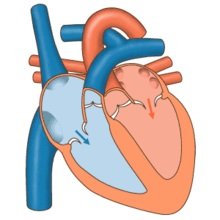 Game On...
Game On...
Through the correct training, you can maximise the returns on
your genetic gifts, and improve your performance, by specifically working on the parameters within these three
interlinked factsheets.
You can, with winter Zone Two riding, increase your heart stroke and volume, thereby raising your cardiac output.
If you can increase your plasma volume as well (Zone 5 work), then you're half-way to the podium.
Having the availability of more blood carrying oxygen, pumped through a bigger, stronger heart, beating at a lower, steady, rate is a very, very good thing.
Warming up properly, and then breathing correctly, to fully saturate the increased blood levels on their way to the muscles, is again a very, very advantageous weapon in the battle against the road, the riders and the environment.
If you are to unload the oxygen from the blood quicker, increasing the oxygen carrying mitochondria in the muscles is a must (Zone 4). As stated earlier, there's no use having stronger, more oxygen dense lung delivery systems if you have a bottle neck when it arrives at the muscles.
You then need to ensure there is sufficient capillarization in the working muscles to allow the oxygen rich red blood cells to get to the point of need as efficiently and effectively as possible.
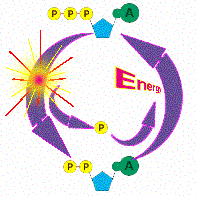
When that fuel ignites to produce energy, the by products created (carbon dioxide, lactate, etc) need to be cleared as quickly, and as efficiently, as possible to prevent lactate build up.
Everything needs to get out of the way to allow the next load of energy producers to get in the line and do their stuff.
Here is a very (allegedly) simplified diagram that shows what needs to be in place, and their interconnected relationships, to allow you to pedal your velocipede at a greater, rate of knots...

What Now...?
Okay, now we know there's more to this cycling lark than just riding
around and hoping to get faster, let's look at what we can do to
enhance our chances of being called up to collect a trophy at the
annual club awards dinner.
But first, (and the bit I really agonised over including or leaving out) a science lesson on the naughty sweets.
Blood Manipulation
It's no secret that all the world's endurance
sports (and race horse stables) have, in the past, played, or
are still playing, with
blood to gain an advantage over the opposition.
There are two ways to do this, a legal way, and an illegal way; or cheating as I like to call it. We need to discuss it, to understand why it's done, the consequences of doing it, and how we can do what we need to do, legally, ethically, morally and with a clear conscience.
Blood doping (transfusions) come in two sorts; autologous, your blood out, your blood in; or homologous, someone else's blood in. Storage is key as red blood cells (the important bit) don't like being outside the body and there is a huge iron loss during transfusions and storage. Which isn't a good thing.
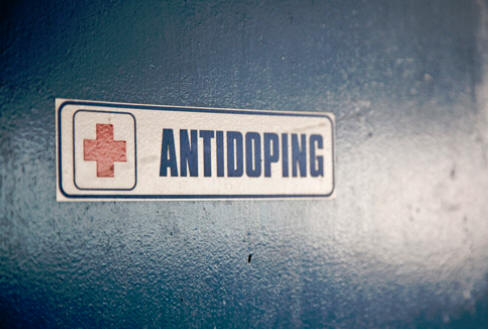
Why blood dope? Blood carries oxygen; more blood equals more oxygen. And as we've discussed, increased oxygen delivery is the holy grail of endurance competition athletes.
An alternative to transfusion, is to genetically engineer an increase in the oxygen carrying capacity, and oxygen transfer rate, of the blood you have. Not without its medical issues and illegal for sporting purposes.
Artificial oxygen saturation is performed with engineered, haemoglobin based oxygen carriers (HBOC's) and perfluorocarbons (PFC's). PFC's can deliver to your muscles a 100 times more oxygen than the red blood cells found in the equivalent plasma volume. Vital in the medical world.
PFC's are so small, they can travel down capillaries the red blood cells can't even get near (remember red cells have to go down capillaries in single file).
Now you see what the clean riders are up against! When you see cyclists climbing the worlds biggest cols, and riding away from the worlds greatest riders, with their mouth closed (Ricco!), you know something is rotten in the State of Denmark.
Obviously, the above paragraphs are to allow you to better understand the terms you will see in the coming years as sports, other than cycling, up their game in the drug testing arena and the cheats are found out.
As another aside ~ an area where you never hear anything about this type of stuff is the military. Blood manipulation is huge in the warfare arena. Where you see anything "Special Op's", or jet fighter pilot raids, you'll see blood doping (or "loading" as they call it) and HBOC/PFC's in abundance. The positive effect on endurance, reaction time, fatigue perception, and more, is almost beyond measure.
Now we move on to what we, the normal weekend warrior, can legally, ethically and morally influence.
Making the most of what you have...
Your primary objective as a performance cyclist is to
legally raise your aerobic ceiling through discipline, hard work and
endevour.
A high aerobic output gives you loads of advantages and has a positive effect on your Functional Threshold Power, anaerobic capacity, VO2max and general all round having a nice time on a bike. When aerobicity goes up and weight goes down, you've hit the race winning jackpot!
As is my mantra; "If you do the right things in the right order, to the right intensity, you get the right results". Not a saying that's going to change the world, but it could change your results. So, Game On...!
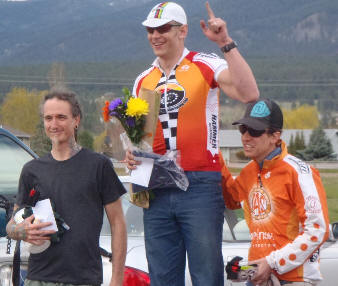
Bracken Spencer attacked his compatriots with 12 miles to go
soloing to victory in Montana's
2013 Rocky Mountain Roubaix
Improving Aerobic Capacity Potential
The very nature of you doing exercise, of any sort, will make you stronger and
delay the onset of fatigue; which is one of the reasons why we train! But
training that brings benefit to one system may prove detrimental to
another, Hence the statement above.
Through careful planning, and the manipulation of your training, you can bring improvements to your Blood & Heart by developing your Cardiac Output (stroke volume & heart rate) and your Haemoglobin (plasma volume & hematocrit).
Generally this is done with Level 5 work, which in our programmes includes the SH1TS, Block Intervals & unsurprisingly the VO2max sessions.
There's no use training hard to give your body more oxygen-dense blood, if it reaches the muscles and there's nowhere for it to go! It's like being the best sprinter in the race but you get dropped on the first climb. Or the best climber who gets dropped on the "race to the base".
Everything you do, and the order you do it in, has to be
complementary to the objective you are pursuing. So here's
another of my quirky, engaging, colourful, diagrams...

Okay, Level 5 training sorts the left and middle boxes out, what next?
Maximum oxygen extraction is, unsurprisingly, taken care of through developing the physiology of the Oxygen & Lungs. As we discussed above, we need to build Mitochondria in the muscles, then give them more routes to the "coal face" by enhancing Capillary Density.
Before we start, a quick VO2max catch up. Your oxygen consumption will, generally, rise in a linear relationship to your exercise intensity, until a certain point. The harder you go the more oxygen you will need and use. At some point on this line, even if intensity continues to increase, your oxygen consumption will plateau and the relationship will "de-couple".
The point of your de-coupling is your VO2max and it will quickly stop you progressing further. It hurts, it's not pleasant, and if you don't "back off" voluntarily, you will be forced to physiologically.
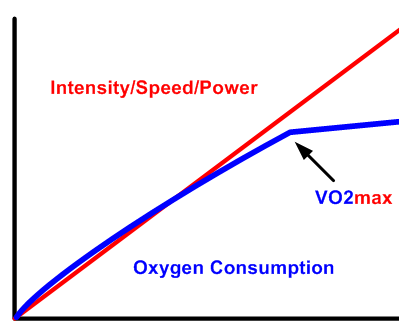
Unless you've just won, it's generally, not a good look. As you'll see if you click the link above the graphic...
Three things have a negative effect on VO2max;
▼ Age ~ peaks in 20's drops 25% by 60
▼ Gender ~ Women are generally 20% less than men
▼ Altitude ~ 5% decrease at 1600 metres (5,000 ft)
Now we know the negative stuff, how do we go about enhancing our oxygen transportation and delivery systems?
Mitochondria are developed through Level 4 (Lactate Threshold) training and to a lesser extent by riding Level 3 (Tempo or sub-Threshold). And Capillary Density, or capillarization, is improved through riding at or just above your VO2max.
Workouts that meet our needs in this area would be our, SWEATS, WILT and Tempo Ten sessions.
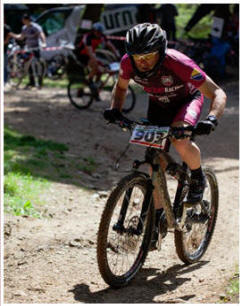 To increase your slow twitch muscle fibres? Level 5;
the level of plenty.
To increase your slow twitch muscle fibres? Level 5;
the level of plenty.
To develop your fast twitch fibres? Level 7 ~ Neuromuscular power, or our infamous weapons of choice, although you wouldn't choose them yourself, the 30 sec SMInts.
Which, as an added bonus, encourages your body to release its own stores of growth hormone and steroids.
And it's all free, legal and perfectly safe! Although it does sting a bit.
Ask Giro di Sarajevo winner Paul Lowe on the right...
The Missing Link...?
There's no use having dynamite and a fuse if you don't have a match!
The third, and potentially most important part of our equation is
fuel.
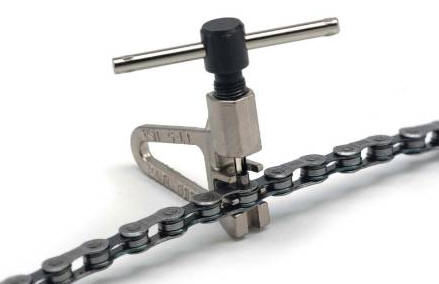
Most of us, even in a relatively de-trained state, can get through an event, be it a 10 mile TT or a Century ride. The quality may not be to our liking but we can all "grind it out". But if we ignore this part of the equation, no matter how well tuned we are; it's all over.
Food and drink on the day, are as vital to your success as your previous three month's training. Neglect nutrition and hydration at your peril.
Before you start your event, and to get the best from your training sessions, you need to ensure your glycogen levels are fully stocked. This means the liver and muscles are saturated with glycogen, and your stomach is full, but not overly so, of the right stuff.
As you'll know from elsewhere, glycogen fuels our activity at the top end of our intensity level and fat provides fuel at a lower level. You need to ensure that prior to your event, (the winter!) you train at a level that allows your body to metabolise fat as a fuel and delay the "switch" to glycogen for as long as possible up the intensity line.
Pay Attention Part Two...
You have around around 160,000 calories of energy in your body.
Of that, around 5000 is "sugar based". Your brain (and nervous
system) can only run on glycogen (sugar), so it holds an out of
reach reserve, to which you have no voluntary access.
What's left, around ninety minutes worth, is used to power you and your bike. You either top it up, before it runs low, or you stop. If you've bonked, or suffered la fringale (as our European cousins call it), you'll know it's not conducive to a good day out.
 Fat is Your Friend
Fat is Your Friend
You need to "teach" your
body to burn fat as a fuel.
You can do this with "glycogen sparing rides" or riding slow enough, for long enough, that you don't wake your body up.
Once your body reaches a certain level of intensity it switches to the more effective, but inefficient, glycogen burning mode.
Glycogen has an energy capacity of four calories a gram. A gram of fat has nine calories.
You can store around 400 grams of carbs in your body, or around 1600 Calories; even a "fit" cyclist, will have around 10 kilos of fat on them. I'll let you do that energy availability calculation yourself.
One of the biggest issues I face, is getting riders to ride slow enough, to enable their bodies to burn fat. Many new riders think the way to get fit is to go as fast as you can for as long as you can. It works to an extent, and will get them far. Just not far enough.
They spend the whole ride eating sugars, drinking energy drinks and throwing gels down their throat like they're going out of fashion. While generally ignoring, or unable to make use of, the abundance of metabolically efficient, energy giving, fat they're carrying around with them. At least they're warm!
At some point, probably during a key objective event, their stomach and kidneys will say enough, or gastric distress will kick in, and they'll slowly grind to a halt. No matter how much training they've done.
Another observation they have, is that they're nearly always hungry, have to eat like a horse (in a field?) and never seem to lose any weight, no matter how hard they try. Riding hard requires fuel, fuel equals food, food intake equals calories, calories equals no weight loss. QED!
Train your body to burn fat and spare glycogen and build some Level 2 work, in to your rides. Ride slow, ride without carbs, and ride to "smell the flowers" every now and again. It's very liberating. As is a race win...
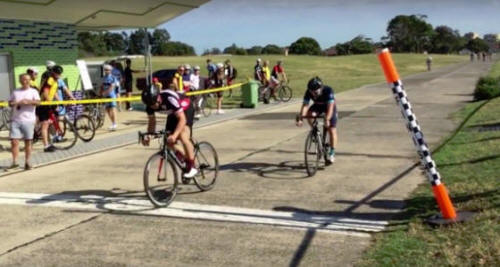
Shannon Minns ~
taking the sprint from a two man breakaway
Heffron Circuit ~ New South Wales Australia
The Message
There are many things you can do to improve your performance, your investment in time on your
bike, and your efficiency and effectiveness against your racing peers. Because if you're not,
you can bet your bottom dollar they are! Here's a few options for your consideration...
Skeletal muscle? You can, to a certain extent, change the composition of your muscles and help them do what's required of them more efficiently, more effectively and sometimes both.
Blood, Plasma & Red Cells? You can help your body increase its plasma volume and red blood cell count quite legally and ethically with diligence and hard work. Work on this part of your training and you will be rewarded in orders of magnitude, providing you pay attention to what happens further down the line.
Mitochondria? You can create conditions, and levels of training in to your programme that allow mitochondria to multiply and flourish. These are the little golden packets that take the oxygen from the blood, drop it off in the muscle, then take away the carbon dioxide and lactate to a place better suited for their processing. So you'll agree these are good?
Myoglobin? Can be increase by altitude training. Although it's the first blood marker they look for in heart attack victims, so be careful! It's out of the realm of controllables for most of us, so get the others sorted first, they'll have far more impact.
Capillarization? Get some VO2max sessions under your belt. Always a quality and time-rewarding, performance enhancer. All of the above are compromised if you have the same amount of capillaries as when you started. Capillaries equal success potential.
Fat for Fuel? Make yourself more metabolically efficient by riding slower every now and again. Allow yourself to fuel the engine with an alternative energy source. There's no use dragging it up a hill if it ain't helping you get there in the first place.
Mix and match your riding to cover all aspects of the training spectrum. Don't get stuck in a rut by doing training you like at the expense of stuff you don't like, that hurts, or is so slow it's boring! Sometimes boring is good.
Don't keep doing the same thing and expect different resutls.
Suffer well my friends, suffer well...








